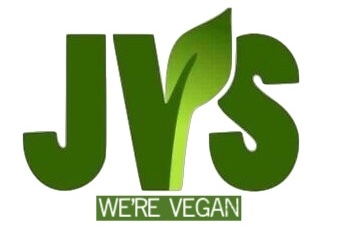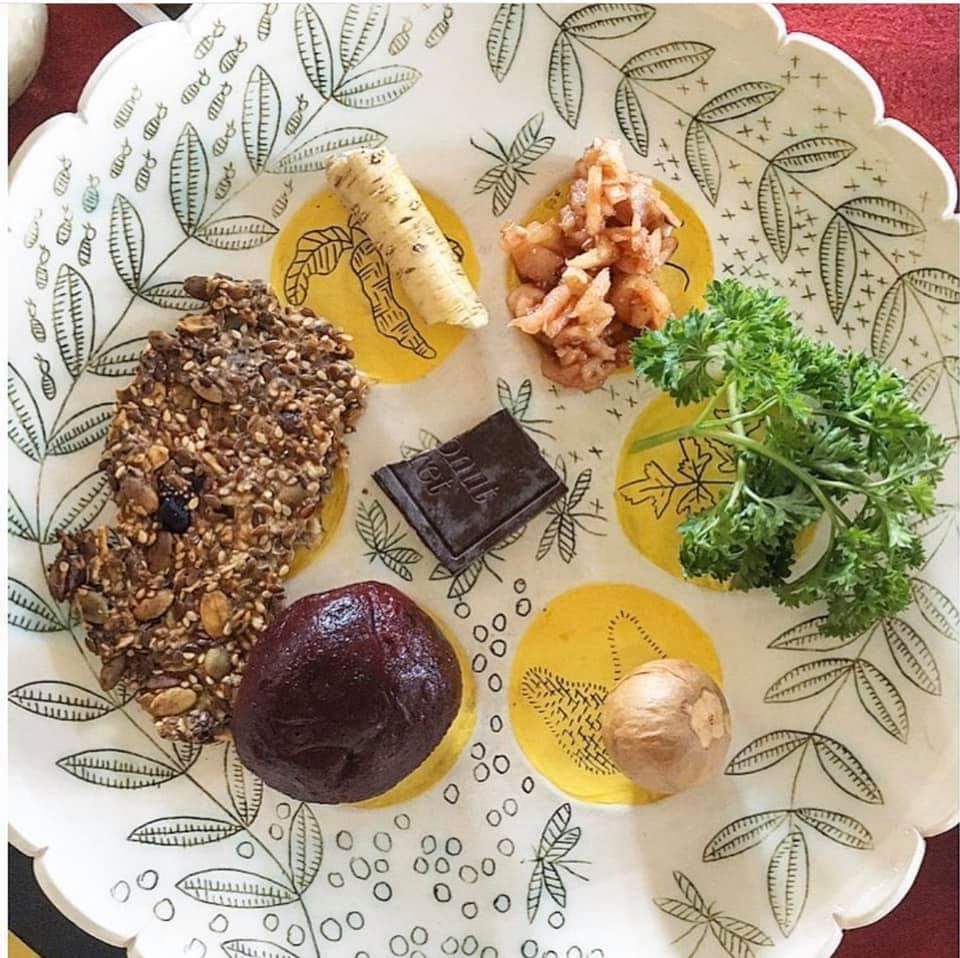‘Pesach actually turned me vegan’, writes Kohenet Yael Tischler…
Four years ago I decided to be vegan for the duration of Pesach. My thought process was this: Pesach is about liberation/oppression. We embody that through our food choices (no leavened bread for a whole eight days!). So, it made sense to be vegan for the holiday itself, and spend that time learning about animal oppression/liberation, and the ethical reasons people choose to be vegan. I decided I would use the knowledge to make an informed decision by the end of Pesach about my diet. I’d imagined that I would decide to reduce my intake of animal products. But, at the end of the week, my flatmate, who had joined in the “Vegan L’Pesach” experiment, announced that she was going completely vegan and that she wanted our flat to be vegan, too. Surprising myself – I agreed. And here I am, four years later.
One of the things you need to think about if you’re going to do a vegan Pesach is how to adapt your seder plate. The seder, the festive Pesach meal that helps us to tell the story of our ancestors’ journey from slavery to freedom, comprises a plate of symbolic foods. For the maror (bitter herbs), charoset (mixture of chopped fruits, nuts & wine), and karpas (green vegetable), there’s no vegan dilemma. But for the zeroa (shank bone) and the beytzah (egg), a vegan must do some re-thinking!
Something to keep in mind is that Judaism has always evolved to meet the needs of our people in every age, and the seder plate is no exception. New seder plate items have been added in the past half-century, such as the orange, which can represent either women’s rights or LGBTQ+ rights, and the olives, which represent justice in Israel/Palestine. I’ve also heard of people putting chocolate on their seder plate, to represent modern slavery and the need to support fair trade. I have even been to seders where guests have been invited to bring their own symbolic objects to add to the seder plate, encouraging them to imagine how they would visually represent the idea of “freedom”. Innovation, as far as the seder plate is concerned, is already a long-standing Jewish tradition.
Furthermore, each of these foods is symbolic of an idea, or a step in the Passover story. For example, the maror represents the bitterness of slavery, and charoset is supposed to look like the mortar the Israelites used to make bricks in Egypt, as well as taste like the sweetness of freedom. So it can really help us, in looking for vegan alternatives, to consider the intended symbolism of the food, and use that to guide us in looking for a suitable replacement.
Here’s a guide to how to re-think the zeroa and beytzah for your Vegan Seder Plate:
Zeroa – Shankbone
What does it represent?
The zeroa’s symbolism is two-fold:
-
- The Passover sacrifice. The origin of this sacrifice was the night of the tenth plague, the slaying of the first born. G-d/dess commanded the Israelites to sacrifice a lamb. They used the blood from the lamb to mark the doorposts of their homes, so that the Angel of Death would know to pass over them and not harm anyone inside. This evolved into the sacrifice of lambs during Passover in Temple times. To a modern reader, especially a modern vegan reader, this can sound abhorrent; my invitation is to focus on the intentions of the sacrifice: Protection and an expression of gratitude for liberation.
- The Arm of G-d/dess. The Haggadah reminds us that G-d/dess brought us out of Egypt, “בְּיָ֣ד חֲ֭זָקָה וּבִזְר֣וֹעַ נְטוּיָ֑ה – with a strong hand and an outstretched arm.” In this case, the zeroa is about strength and power beyond what we can imagine.
What can we use instead?:
- Beetroot: The beetroot has been a popular shankbone replacement, since anyone who has ever cooked with beetroot knows that it really does bleed all over the place. It’s evocative of the blood of the Passover sacrifice, and the way in which our ancestors used animal offerings as an expression of gratitude. Furthermore, there’s a possible connection between the beetroot and the Passover meal, given that Rav Huna opted to eat beetroot during his seder (Babylonian Talmud Pesachim 114b).
- Two mushrooms joined together by a toothpick to look like a bone: This is what we did growing up in my vegetarian household. The advantage of this one is that it looks like a bone, so you can imagine it as a metaphor for the arm of G-d/dess.
- A pomegranate: I once had the pleasure of seeing my teacher Rav Kohenet Shoshana Jedwab “slaughter” a pomegranate and “paint” the doorposts of the room we were in with its “blood” (juice). This alternative is equally evocative of the Passover sacrifice in colour, but also has the advantage of being very sweet and delicious, which could help us tap into our gratitude for freedom.
Beytzah – Egg
What does it represent? Like the zeroa, the beytzah also has multiple resonances:
- The circle of life: I caught you singing The Lion King, didn’t? But yes, the egg represents the cycle of life, death and rebirth. It resonates with the coming of spring, when the whole world around us seems to be coming back to life.
- The Hagigah offering: This was the festival offering that our ancestors brought to the temple during the three pilgrimage festivals, of which Pesach was one. Sacrifices in Temple times were how our ancestors prayed, and this particular prayer was one of celebration.
- Mourning: The traditional type of “mourning” meant by the egg is mourning for the destruction of the Temple in Jerusalem. But eggs are associated with other types of mourning in Judaism, including being a traditional food at a shiva house (house of mourning). At the seder, we might mourn a great many things – from the Israelites who never made it out of Egypt, dying in the harsh conditions – to the Egyptian soldiers who drowned in the Red Sea. We might mourn the many human beings still dying unjustly in the world today. A vegan might mourn the continued destruction of animal life at the hands of human beings.
What can we use instead?:
- A smooth, round rock: This works well as a life cycle image, and also draws on the theme of death/mourning, since it is traditional for Jews to place stones on gravesites when they visit cemeteries.
- Seeds: Seeds make things grow, and that’s part of the cycle of life. I love this alternative, as it suggests the same “potential for life” as the egg. They could grow, but they haven’t yet, and that’s what makes this symbol so potent. New life is always a possibility under the right conditions, especially during spring, but we need to nurture it properly.
- A flower: A beautiful symbol of growth, new life unfolding, and spring. A fun thing to note about this symbol – some of our ancestors made a practice of blessing the first blossoms around this time of year.
Good luck assembling your vegan seder plate and happy Pesach!




















